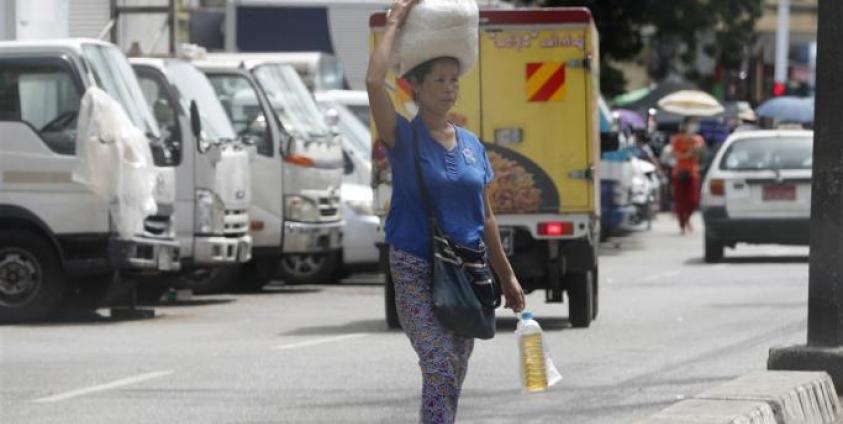The Food and Agriculture Organization (FAO) is warning that as many as 15 million people in Myanmar are at risk of not having enough food to eat over the next six months.
The warning comes in their report: Hunger Hotspots - FAO‑WFP early warnings on acute food insecurity June to November 2023 outlook.
The Food and Agriculture Organization of the United Nations (FAO) and the World Food Programme (WFP) warn that acute food insecurity is likely to deteriorate further in 18 hunger hotspots – comprising a total 22 countries – during the outlook period from June to November 2023.
In Myanmar, the intensity of the conflict and ongoing, high numbers of displacement amid extreme constraints to humanitarian access – which are likely to further deteriorate in the outlook period – raise very high concerns over the potential level of people facing critical levels of acute food insecurity; 15.2 million people were expected to require food and livelihood assistance in 2023, including 2.2 million children and women.
Acute food insecurity could further increase as armed conflict is likely to intensify in the coming months, amid economic uncertainty, lack of humanitarian access, displacement and high food prices.
Over the past six months, conflict further intensified across the country, resulting in movement restrictions, high numbers of civilian casualties and displacement. As of March 2023, an additional 357 000 people have been displaced in the previous six months, resulting in a continuously increasing number of IDPs, estimated at over 1.76 million.92 The recent expansion of martial-law orders over a growing number of townships indicates a likely intensification of conflict, which could be further amplified if preparations for general elections in the coming months go ahead.
The violence could reverse a fragile economic recovery, undermine agricultural production and lead to new displacement. While the kyat has stabilized, foreign-exchange shortages persist, and the official exchange rate to the dollar is approximately 30 percent lower compared to the parallel exchange rate. The average price of rice in March 2023 was 74 percent higher.
Access to food by poor households will further be constrained during the lean season (peak in July–August).
The situation is compounded by the impact of Cyclone Mocha in mid-May 2023. Heavy rains and winds triggered flash floods and landslides, washing away thousands of homes, and causing widespread damage to infrastructure in northern Rakhine State.
According to the latest Humanitarian Needs Overview, 15.2 million people, or approximately 28 percent of the population, were estimated to be acutely food insecure in 2022, representing a sharp deterioration and increase by 2 million people compared to 2021. These populations are expected to require food and livelihood assistance in 2023. In addition, 2.2 million children and women need nutrition assistance in 2023, a 10 percent increase compared to 2022.100 The November 2022 law, prohibiting any organization from operating without a registration certificate or working with unregistered affiliates, further constrains the ability of humanitarian actors to reach people in need, amid already extreme access constraints.








